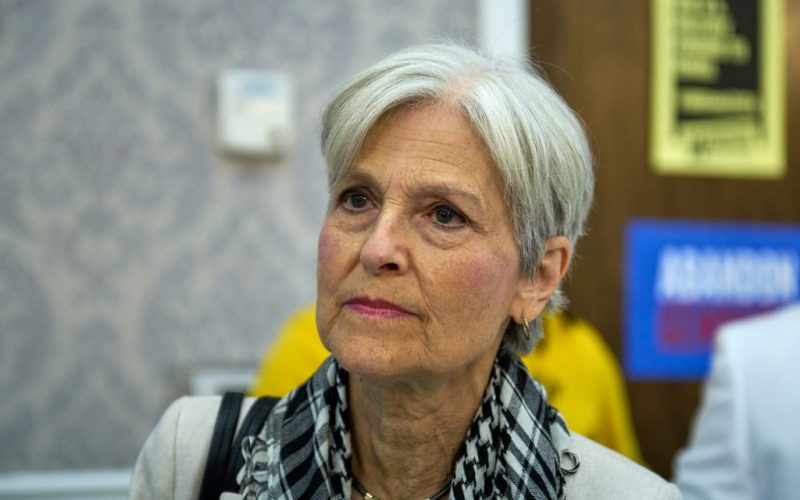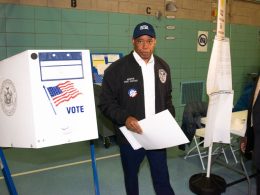New Yorkers filling out their ballots this year will notice something unusual: there are only two presidential candidates listed. In fact, New York has the dubious distinction of being the sole state in 2024 with only two presidential candidates on the ballot.
In a time when both Democratic and Republican parties loudly decry alleged voter disenfranchisement, New York has managed to suppress every alternative party and constrain voter choice. This is a serious form of voter suppression that has received almost no political attention, and it comes at a time when 58% of Americans polled by Gallup show support for a third political party.
Most voters would be unsurprised to learn the reason behind this lack of choice: former Gov. Andrew Cuomo inserted a change to election law in the pandemic budget of 2020 designed to punish the Working Families Party and eliminate smaller parties like the Greens and Libertarians, then make it impossible to regain ballot status, and the Legislature passed it. In business this would be called cartel-like behavior, but in New York limiting voter options is politics as usual.
Overnight, the requirements for parties wishing to retain ballot status and more easily run candidates changed from 50,000 votes for a gubernatorial candidate to 130,000 votes or 2% of the vote (whichever is higher) in a gubernatorial and presidential election. After losing status, a party must petition their candidates on as independents, and Cuomo changed that requirement from 15,000 signatures statewide to 45,000 in 42 days — the toughest in the nation.
My own party, the Greens, lost ballot status in 2020 and tried to regain it this year, with petitioners heroically collecting 42,000 signatures for Jill Stein, many of them motivated by Dr. Stein’s opposition to the ongoing genocide in Gaza. It wasn’t enough, and cost a significant amount of money; it cost RFK Jr. even more — more than $1 million for a failed attempt for ballot access.
When a petition drive may cost more than $1 million, it is safe to say that smaller parties have no hope for placing presidential candidates on the New York ballot. Unfortunately, the courts have also seemed to not care about this assault on democracy, and rejected each ballot access case brought in front of them.
For parties like the Democrats and Republicans, who seem to represent little more than not being the other these days, that might be a good thing. But for voters, and for democracy, it is a serious problem.
If you want to vote for a candidate and party that supports your values, say: ending the conflict in Gaza, single-payer universal health care, rapid transition to renewable energy and massive public works to get there (the Green New Deal), living wage jobs and housing for all, and abolishing student debt, which the Greens support, you’ll have to write-in Jill Stein this year — not the same at all as being on the ballot.
Because smaller parties aren’t on the ballot, it will affect their ability to easily run candidates at state and local levels, too — another suppression of democratic choice.
In a healthy multiparty democracy, the electoral system would allow credible ways for parties and their candidates to gain ballot status and win office, like nearly every other representative system in the world. Different policies would get a hearing, ones that could benefit New Yorkers. It might also temper polarization: parties might need to form coalitions, acknowledging and even respecting other organizations than their own.
Gov. Hochul and the Legislature can and should revoke Cuomo’s ballot suppression passed in 2020. But why stop there? New York should set the gold standard for ballot access, becoming a model of democracy rather than sham democracy. Why not lower the requirements for candidates to match New Jersey: 800 signatures of qualified voters, or Louisiana, where a presidential candidate need only file a $500 fee?
Parties should have their own way to permanent ballot status: in Nevada, small parties need 1% of total registered voters in the state, 1% of total votes for any partisan office, or petition signatures from voters equal to 1% of the votes cast in the last general election for Congress.
New Yorkers may be denied choice on the ballot this year, and those of us that want to vote for candidates like Stein, Claudia De La Cruz of the Party for Socialism and Liberation, or Libertarian Chase Oliver will have to settle for a write-in. But New York can change this and to help build the robust democracy that its citizens deserve.
LaVenia is co-chair of the Green Party of New York and an assistant professor of political science at SUNY Oneonta.








